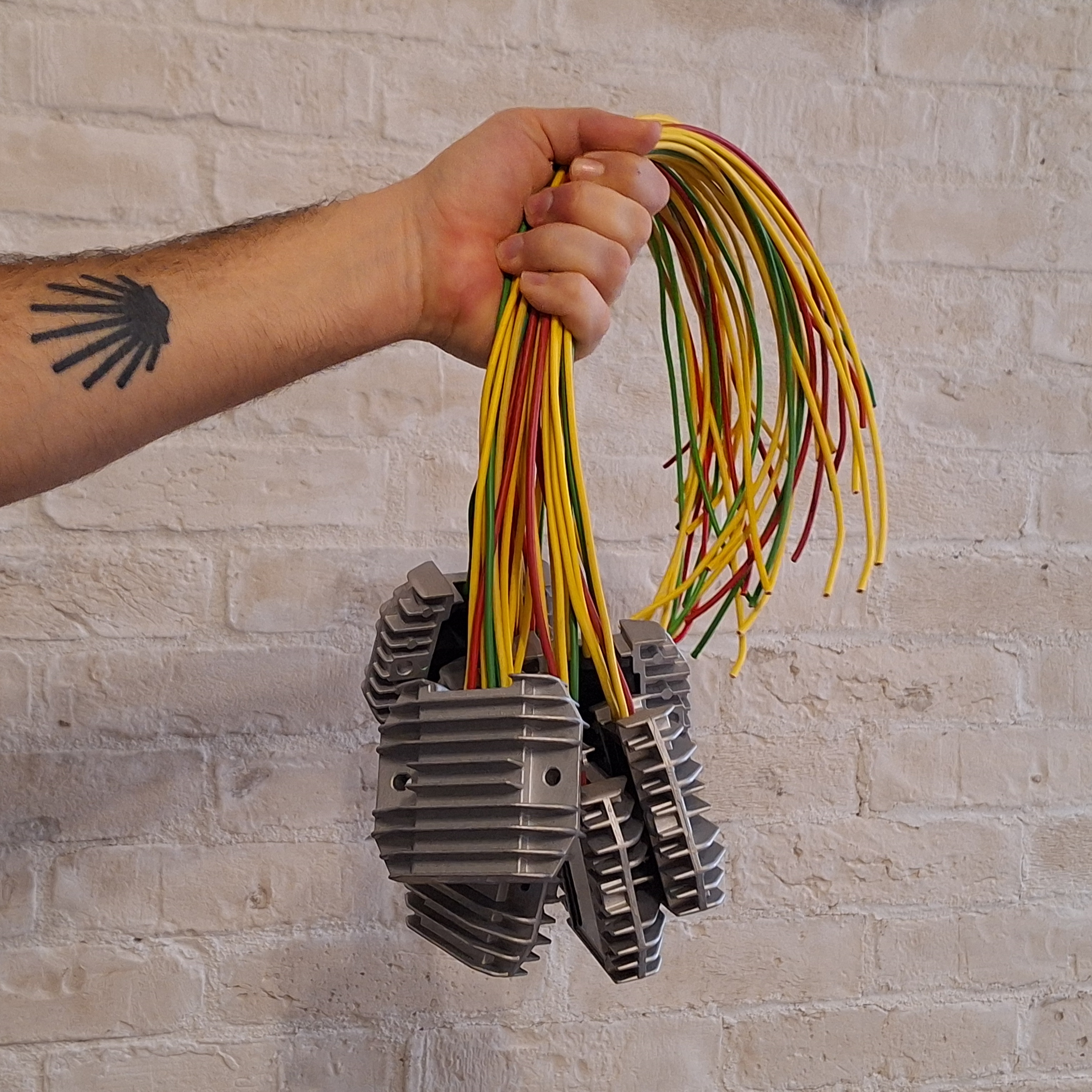Our regulator rectifier can be used universally for all motorcycles (powered by a three-phase generator) regardless of brand. Advantages of our product:
- It heats up less compared to previous rectifiers made with thyristor technology
- Thanks to this, you don't need the cooling effect of the driving wind (you can also install it under the body) and even if you install it next the exhaust the heat of it does not cause any problems
- More stable voltage regulation (adjusts to the desired voltage more precisely)
- Compatible with most motorcycles powered by three-phase generators with permanent magnet induction. You can read more about this by clicking here
- Waterproof
We guarantee our product for two years.
The wires of the regulator rectifier are not equipped with a connector, we recommend soldering. If you insist on it, you can find connecting sets in the "Accessories" category.
The wirelength is approx. 25 cm long, which is long enough in most cases, but we also sell them with approx. 55 cm long wire.
After two decades of regulator rectifier production and almost ten thousand units sold, in addition to continuous development, our product is currently working with the combined application of the following two technologies:
MOSFET transistors:
Thanks to this, the rectifier heats up less and the regulation is more stable, compared to a thyristor regulator rectifier.
The advantage of MOSFET technology is that it can ensure the charging of motorcycles equipped with average-power generators on the market without any problems, regardless of the installation location. The current what is not used by the electric network is returned by the MOSFETs to the generator (shunt regulation) with almost no loss, instead of the thyristors, which produce high heat loss.
Controller IC:
According to our past experience, the "normal" MOSFET rectifier on certain models (e.g. Honda VFR800 Vtec) could interfere with the operation of the injector. When the rectifier used together with the controller IC, this interference was eliminated.
"Normal" MOSFET rectifiers also operated at accaptable low temperatures. However, in the case of higher-powered generators, they were under greater stress. We were able to further reduce this heating with the controller IC.
Provides extra protection. If the battery is accidentally disconnected (e.g. the main fuse blows), the IC detects this and does not allow the voltage on the system to rise to a harmful level, thereby protecting electronic consumers.
Less load on the generator. Another advantage of IC control is that it evenly distributes the current load of individual phases. If you are more interested in controller IC technology, you can read more about it on our blog.
Expertise - We've been in the business for over 20 years
All of our products are in stock
Delivery in a few business days - click here to see
Do you have any questions about the product?
Not sure if it will be compatible with your motorcycle?
Write to us at info@rectifier.eu so we can assist you!
The product description continues below!
(Net: 69.7 €)








